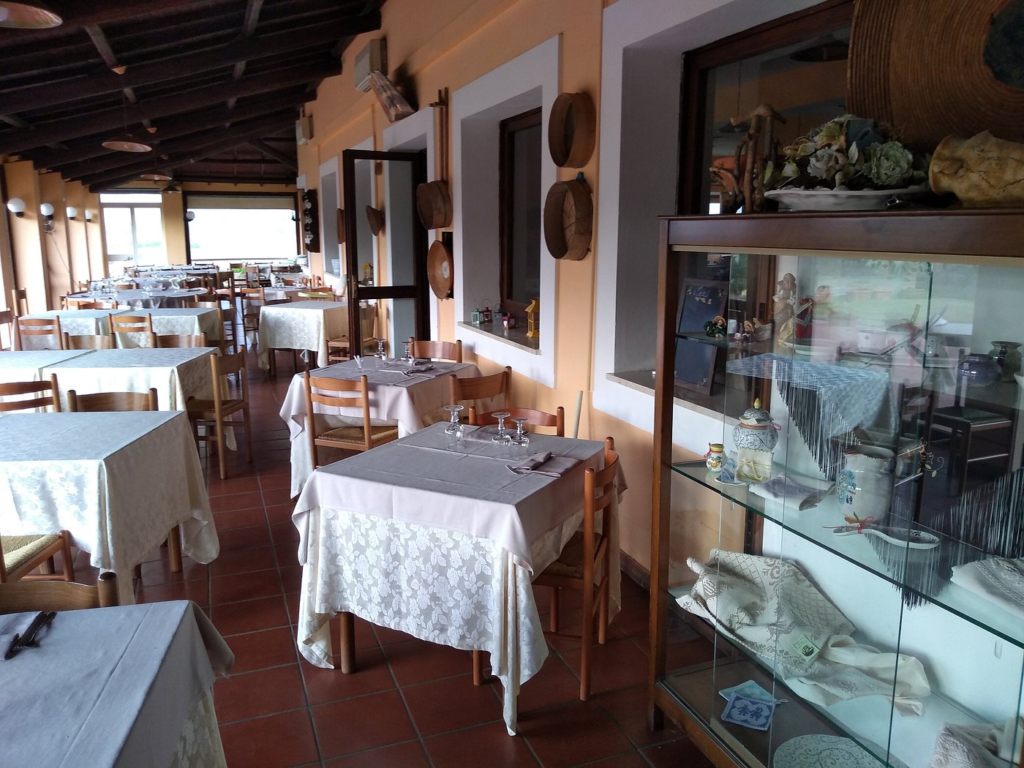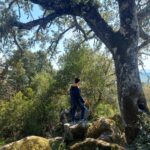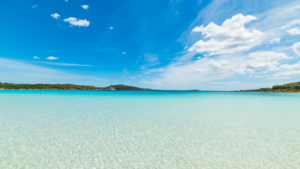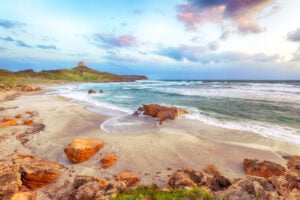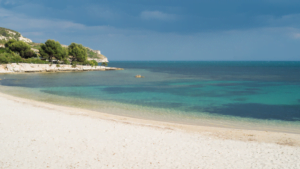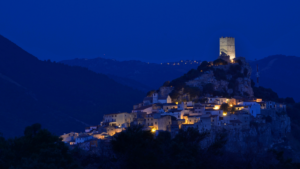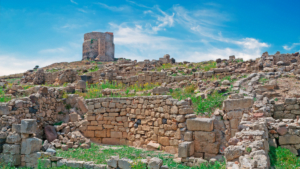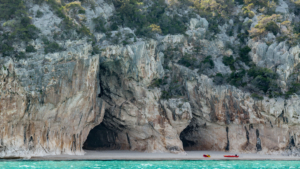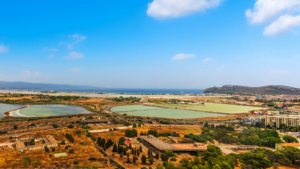Barumini is a small village located in the heart of Sardinia, Italy. Nestled in the province of South Sardinia, Barumini is renowned for its rich historical and cultural heritage. The village’s origins date back to prehistoric times, with significant developments occurring during the Nuragic civilization, which thrived on the island from the Bronze Age until the 2nd century AD.
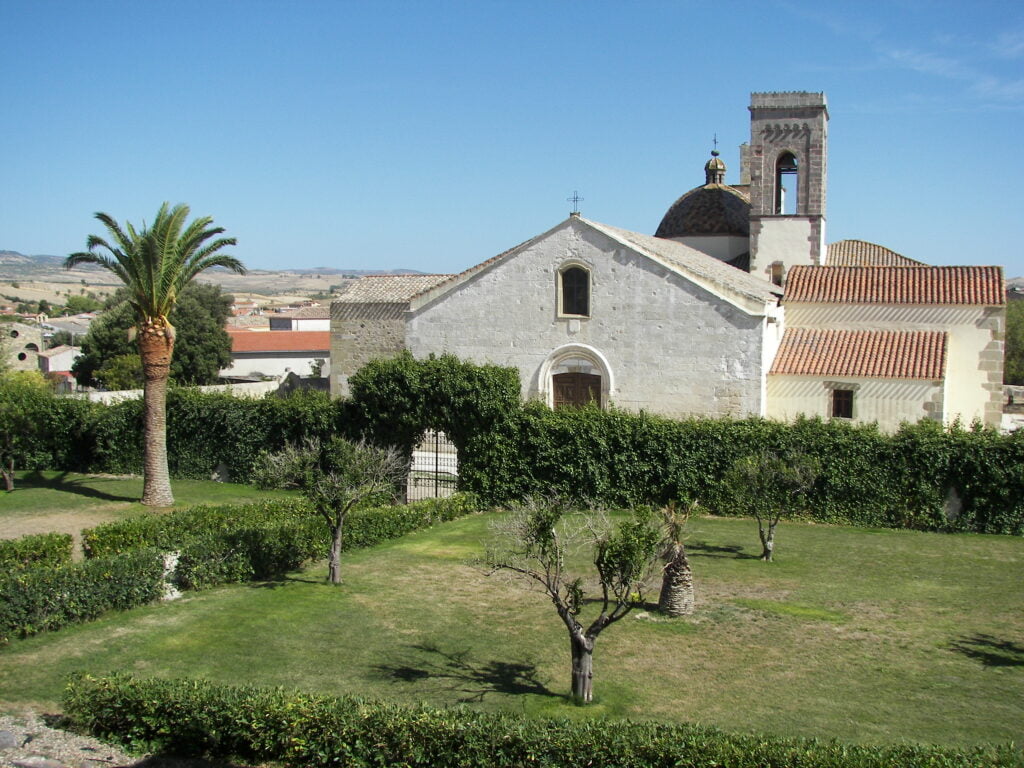
Located approximately 60 kilometers north of Cagliari, Sardinia’s capital, Barumini is easily accessible by car, making it a convenient day trip for visitors. The village itself offers a picturesque setting, with traditional Sardinian architecture, narrow streets, and a tranquil atmosphere that contrasts with the historical grandeur of Su Nuraxi. Visitors to Barumini can also enjoy local Sardinian cuisine and hospitality, adding to the overall experience of exploring this unique historical site.
Best Things To See in Barumini
Su Nuraxi
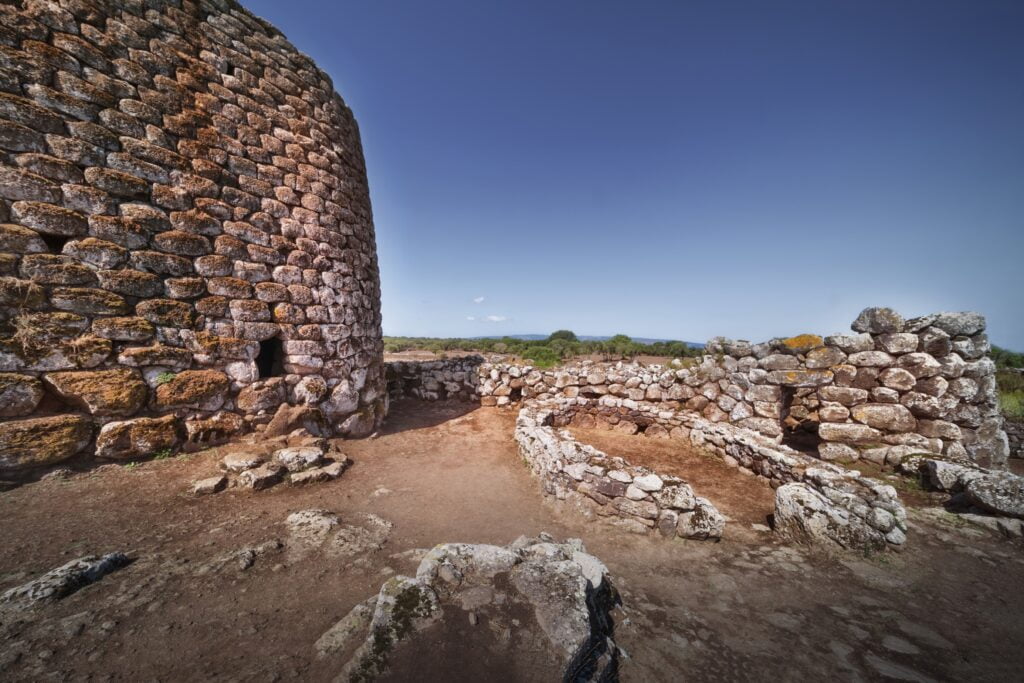

Overview of Su Nuraxi
Historical Background and Archaeological Significance
Su Nuraxi is one of the most important archaeological sites in Italy. This ancient structure is a testament to the ingenuity of the Nuragic civilization, which flourished on the island from around 1800 BC to the 2nd century AD. The name “Su Nuraxi” translates to “The Nuraghe” in Sardinian, referring to the distinct type of tower-fortresses built by this civilization.
The Su Nuraxi complex was constructed during the Bronze Age, with its central tower dating back to the 16th century BC. Over the centuries, the site expanded to include additional towers, fortifications, and a surrounding village. This site is unique due to its complexity and the preservation of its structures, which provide valuable insights into the social, military, and architectural advancements of the Nuragic people.
Su Nuraxi gained international recognition in 1997 when it was designated a UNESCO World Heritage Site. This recognition underscores its global importance as a cultural and historical landmark, offering a rare glimpse into the prehistoric past of the Mediterranean.
Structure and Features of the Nuraghe Complex
The Su Nuraxi complex is centered around a main tower, known as the “mastio,” which originally stood over 18 meters high. This central tower is surrounded by four smaller towers, connected by a curtain wall, forming a quadrilateral layout. The towers are built with large basalt blocks, intricately fitted together without the use of mortar, showcasing advanced construction techniques.
Inside the complex, visitors can explore the remnants of various rooms, passageways, and staircases that connect different levels of the towers. Surrounding the central structure is a village consisting of around 50 circular huts, each with distinct features such as hearths, benches, and storage areas. This village provides a fascinating glimpse into the daily life of the Nuragic people, highlighting their social organization and domestic activities.
Visitor Information
Opening Hours and Guided Tour Schedules
Su Nuraxi is open to visitors year-round, with guided tours available daily. Tours typically start every half hour and are available from 9 AM until one hour before sunset. These guided tours are the only way to explore the site, ensuring that visitors receive detailed historical and architectural information from knowledgeable guides.
Ticket Prices and Tour Options
- Adults: €11
- Children (under 12 years): €7
There are also discounted rates available for groups and students. Tickets can be purchased on-site or in advance through various online platforms. Visitors are encouraged to check the official website or contact the site directly for the most up-to-date information on opening hours, ticket prices, and tour availability.
Su Nuraxi offers a unique and immersive experience for anyone interested in ancient history and archaeology, making it a must-visit destination in Sardinia.
Casa Zapata Museum


Historical Context of Casa Zapata
The Zapata Family’s History and the Transformation of Their Residence into a Museum
Casa Zapata, located in Barumini, is a significant historical and cultural landmark. The Zapata family, originally from Spain, settled in Sardinia in the 16th century. They were a prominent aristocratic family, and their residence in Barumini was constructed in the late 1500s. The manor was built in the typical Spanish architectural style of the period, reflecting the family’s status and influence.
In the late 20th century, during restoration works on the Zapata residence, archaeologists made a remarkable discovery: beneath the foundations of the house lay the ruins of a Nuragic settlement. This discovery led to the transformation of Casa Zapata into a museum, allowing visitors to explore both the historical residence and the ancient ruins below.
The Casa Zapata Museum opened to the public in 2006. It provides a unique opportunity to experience layers of history, from the Nuragic civilization through to the Spanish influence of the Zapata family, all within a single site.
Exhibits and Attractions
Description of the Three Main Sections: Archaeological, Historical, and Ethnographic
- Archaeological Section
- This section of the museum showcases the Nuragic remains found beneath Casa Zapata. Visitors can walk on transparent platforms, allowing them to view the ancient stone structures below. The exhibits include artifacts from the Nuragic period, such as pottery, tools, and other everyday items, providing insight into the life and culture of the Nuragic people.
- Historical Section
- The historical section focuses on the Zapata family and their residence. It includes restored rooms furnished with period-appropriate decor, displaying how the aristocratic family lived. There are also documents, portraits, and personal items belonging to the Zapata family, illustrating their significant role in the region’s history.
- Ethnographic Section
- The ethnographic section highlights the traditional culture and customs of the Barumini area. Exhibits include traditional Sardinian costumes, tools, and crafts. This section aims to preserve and promote the cultural heritage of the local community, offering visitors a deeper understanding of Sardinia’s rich traditions and way of life.
Visitor Tips
Best Times to Visit and Any Special Events
- Best Times to Visit: The Casa Zapata Museum is open year-round, but the best time to visit is during the spring and autumn months when the weather is mild, and the tourist crowds are smaller. This allows for a more pleasant and unhurried exploration of the museum.
- Special Events: The museum occasionally hosts special events, including temporary exhibitions, cultural festivals, and educational workshops. Visitors are encouraged to check the museum’s official website or contact the museum directly for information on upcoming events and any seasonal changes in opening hours.
By visiting Casa Zapata, guests can enjoy a multifaceted historical experience, exploring the rich heritage of both the Nuragic civilization and the Zapata family within the same fascinating site.
Church of the Immaculate Virgin
In the heart of Barumini, a town mainly known for its archaeological wonders, lies another gem worth visiting: the Church of the Immaculate Virgin.
This sacred site, standing with a tranquil and majestic presence, offers a moment of peace and reflection amidst the historical and cultural adventures the town has to offer.
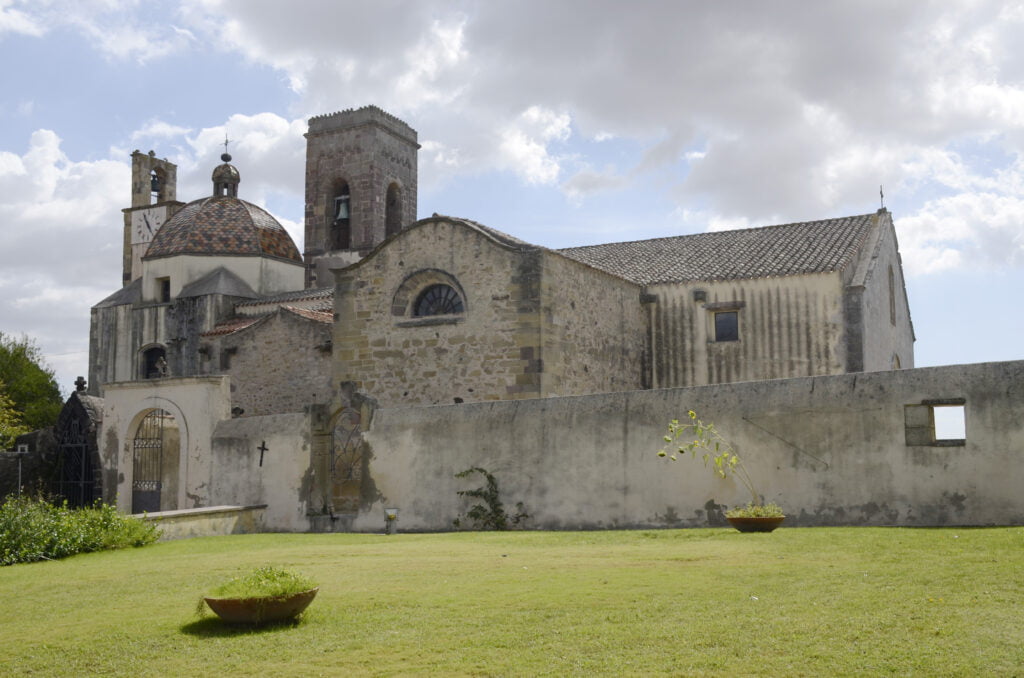

Entering the church, one can feel a sense of peace and spirituality that permeates the environment. It is a place where visitors can take a moment to reflect and meditate, away from the hustle and bustle of the main tourist attractions. The stained glass windows filter the light in a way that creates a calm and serene atmosphere, ideal for a moment of prayer or meditation.
Architecture and Interiors
The Church of the Immaculate Virgin is a splendid example of Sardinian religious architecture. Its simple yet elegant façade, characterized by clean lines and a distinctive bell tower, invites visitors to enter and discover the equally fascinating interiors. Inside, the eyes are immediately drawn to the high altar, a work of art in itself, surrounded by beautiful frescoes and sacred artworks that adorn the walls and ceiling of the church.
Events and Celebrations
The Church of the Immaculate Virgin is not only a place of worship but also a vital center for the local community. Throughout the year, it hosts a series of religious events and celebrations, including the Feast of the Immaculate Conception, held annually on December 8th. During this festival, the church becomes the focal point of a vibrant and colorful celebration, with solemn masses, processions, and other activities that bring the community together in a moment of shared festivity and spirituality.
Visiting the Church of the Immaculate Virgin also offers the opportunity to connect with the local community.
Centre for Communication and Promotion of Cultural Heritage Giovanni Lilliu


Purpose and Significance
Role in Preserving and Promoting Sardinian Culture and History
The Centre for Communication and Promotion of Cultural Heritage Giovanni Lilliu, located in Barumini, is dedicated to the preservation, study, and promotion of Sardinian culture and history. Named after the renowned archaeologist Giovanni Lilliu, who played a crucial role in the excavation of the Su Nuraxi site, the center serves as a hub for cultural education and heritage conservation.
The center aims to foster a deeper understanding of Sardinia’s rich historical legacy through various initiatives. It provides a platform for academic research, public education, and cultural events that highlight the island’s unique heritage. By organizing exhibitions, conferences, and educational programs, the center actively engages the local community and visitors, promoting awareness and appreciation of Sardinia’s archaeological and cultural treasures.
Exhibitions and Educational Programs
Highlights of Current and Past Exhibitions
The Centre for Communication and Promotion of Cultural Heritage Giovanni Lilliu hosts a variety of exhibitions that showcase different aspects of Sardinian history and culture. These exhibitions include:
- Permanent Exhibits: Displays dedicated to the Nuragic civilization, featuring artifacts and informative panels that explain the significance of the Su Nuraxi site and other Nuragic structures.
- Temporary Exhibits: Rotating exhibitions that cover a wide range of topics, from Sardinian art and craftsmanship to historical documents and photographs. These exhibits often feature collaborations with other cultural institutions and researchers.
- Interactive Displays: Modern, interactive exhibits that use multimedia technology to engage visitors of all ages, providing a dynamic and educational experience.
Educational Programs
The center offers numerous educational programs aimed at different age groups, including:
- School Programs: Tailored educational tours and workshops for students, helping them learn about Sardinian history in an engaging and hands-on manner.
- Public Lectures and Workshops: Regularly scheduled talks and workshops led by experts in archaeology, history, and cultural studies.
- Community Events: Cultural festivals, craft demonstrations, and other events that celebrate and preserve local traditions and customs.
Visitor Information
Opening Hours, Entry Fees, and Guided Tour Availability
- Opening Hours: The center is typically open daily, with hours varying seasonally. It is advisable to check the official website or contact the center directly for the most current opening times.
- Entry Fees: The entry fees are modest, aimed at making the center accessible to a wide audience. Discounts are often available for students, seniors, and groups.
- Guided Tours: Guided tours are available and highly recommended to gain a comprehensive understanding of the exhibits and the history they represent. These tours are led by knowledgeable guides and are available in multiple languages.
By visiting the Centre for Communication and Promotion of Cultural Heritage Giovanni Lilliu, guests can immerse themselves in the culture of Sardinia, gaining insights into the island’s ancient past and vibrant traditions.
Barumini Tours
Barumini Su Nuraxi and Casa Zapata


Overview
Explore a different side of Sardinia by visiting the ancient Barumini complex and Casa Zapata, renowned for their historical significance. This guided tour offers a unique opportunity to delve into the Nuragic civilization, lesser-known but equally fascinating compared to the Greek and Roman ruins across Italy.
Experience Highlights
- Comfortable Travel: Begin your journey at 9:00 AM from Piazza Yenne in Cagliari. Travel in an air-conditioned minivan, ensuring a comfortable trip even on hot summer days.
- Su Nuraxi di Barumini: Upon arrival, explore the ancient Nuraghe and its surrounding village, dating back around 3,500 years. The Nuraghi, monumental structures used for both defense and civil purposes, are a testament to the megalithic civilizations of the Mediterranean.
- Casa Zapata Museum: Visit this museum, housed in a 17th-century building constructed over Nuragic ruins. The museum is divided into three sections: archaeological, historical, and ethnographic, providing a comprehensive understanding of the area’s rich history.
- Guided Exploration: With admission tickets and a guide included, immerse yourself in the history and significance of these ancient sites.
Additional Information
SU NURAXI BARUMINI UNESCO World Heritage Site


Overview
Discover Su Nuraxi, a UNESCO-listed site dating back to the Bronze Age, on this immersive tour. This experience takes you back 3,500 years to explore one of Sardinia’s top archaeological sites with a knowledgeable guide.
Experience Highlights
- Private Guide Pickup: Your private guide will pick you up in a comfortable minivan, providing a personal and informative journey to Barumini.
- Su Nuraxi Exploration: Begin with a visit to the village, featuring both Nuragic period round housing structures and Punic-Roman rectangular ones. Discover the central courthouse and the meeting hut, which provide insights into the social and cultural aspects of the Nuragic civilization.
- Central Tower Visit: Enter the main Nuraghe structure via an iron ladder leading to a small entry at 7 meters high. Explore the central tower and four side towers, resembling a medieval castle in grandeur.
- Optional Upgrades: Enhance your tour by visiting surrounding sites like the Giara plateau, the Giants’ Tomb, and the medieval palace for a more comprehensive historical experience.
Additional Information
- Hassle-free travel: Enjoy round-trip travel from your Cagliari hotel for a seamless and enjoyable tour.
- Source: Viator – SU NURAXI BARUMINI Unesco World Heritage Site
Barumini UNESCO Site and Giara di Gesturi Tour


Overview
Dive into the rich history and stunning nature of Sardinia with this half-day tour to the Barumini UNESCO site and the Giara di Gesturi plateau. This tour combines archaeological exploration and nature observation, offering a unique glimpse into the island’s diverse heritage.
Experience Highlights
- Guided Exploration of Su Nuraxi: Start your journey with a visit to the Su Nuraxi Fortress, a UNESCO World Heritage Site. Learn about the Nuragic civilization and its impressive structures with the help of a knowledgeable guide.
- Wild Horses of Giara di Gesturi: Continue to the Giara plateau to see the unique breed of small wild horses that have roamed the area since Phoenician times.
- Convenient Half-Day Tour: Enjoy a half-day excursion that blends historical and natural attractions, providing a well-rounded experience of Sardinia.
Additional Information
- Pickup and Drop-off: Convenient pickup and drop-off from central Cagliari.
- Admission: Note that the admission ticket to Su Nuraxi is not included in the tour price.
- Source: Viator – Barumini UNESCO Site and Giara di Gesturi Tour
Nearby Attractions
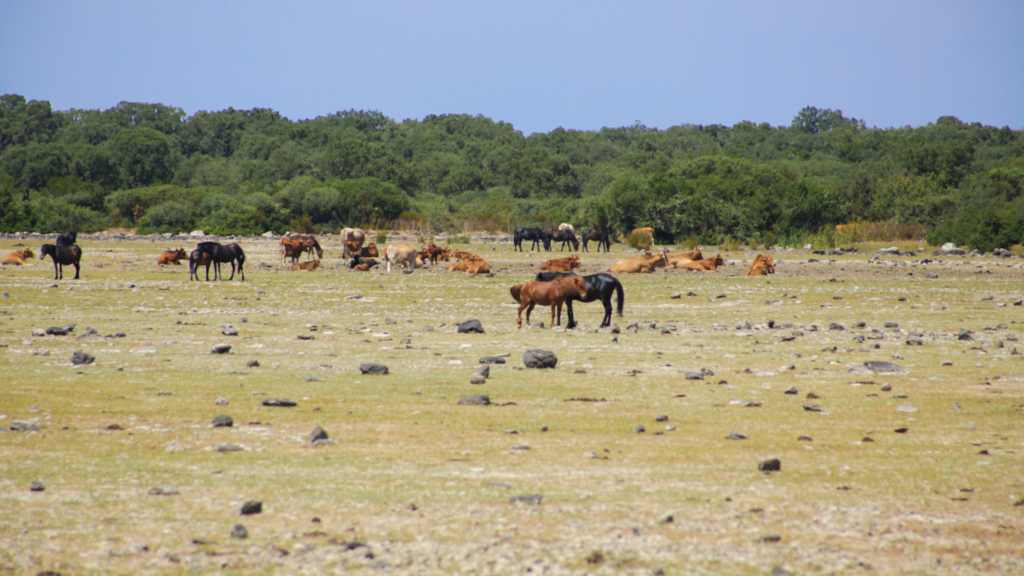

La Giara di Gesturi
Description of the Nature Reserve and Its Unique Wildlife, Including Wild Horses
La Giara di Gesturi is a vast, elevated plateau located near Barumini, renowned for its stunning natural beauty and unique wildlife. Covering approximately 42 square kilometers, the reserve is characterized by its lush Mediterranean vegetation, including oak forests, lentisk, and juniper shrubs. The terrain is dotted with small lakes and ponds, known as “paulis,” which are crucial for the local ecosystem.
One of the most remarkable features of La Giara di Gesturi is its population of wild horses, known as “Cavallini della Giara.” These small, robust horses are a unique breed, believed to have inhabited the plateau since ancient times. They are known for their resilience and ability to survive in the harsh conditions of the plateau. Observing these horses in their natural habitat is a highlight for many visitors, offering a glimpse into a rare and ancient breed that has remained relatively unchanged over centuries.
The Romanesque Church of San Giovanni
Historical Importance and Architectural Details
The Romanesque Church of San Giovanni, located in Barumini, is a significant historical and architectural landmark. Built in the 12th century, the church is a fine example of Romanesque architecture in Sardinia. Its simple yet elegant design features characteristic elements of the style, including rounded arches, thick stone walls, and a symmetrical façade.
The church holds historical importance as a religious center that has served the local community for centuries. Inside, visitors can find well-preserved frescoes and religious artifacts that offer insights into the medieval religious practices and artistic expressions of the region. The Church of San Giovanni stands as a testament to the enduring religious and cultural traditions of Barumini and provides a serene place for reflection and appreciation of Sardinian heritage.
Parco della Giara
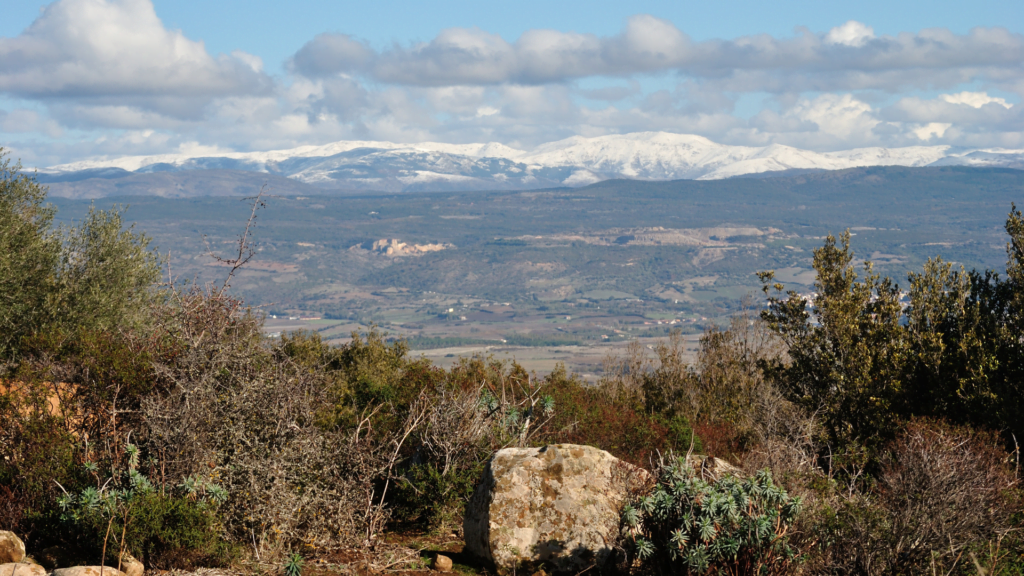

Activities and Sights in the Park
Parco della Giara, also known as the Giara Park, is a part of the larger Giara di Gesturi plateau (encompassing different municipalities: Tuili – Gesturi – Setzu – Genoni) and offers a range of activities and sights for visitors. The park is an excellent destination for nature enthusiasts, hikers, and bird watchers.
Activities in Parco della Giara:
- Hiking and Walking Trails: The park features numerous trails that wind through its diverse landscapes, providing opportunities for hiking, walking, and exploring the natural beauty of the plateau. Trails vary in difficulty, catering to both casual walkers and experienced hikers.
- Wildlife Observation: In addition to the famous wild horses, the park is home to various bird species, reptiles, and small mammals. Bird watchers can spot species such as the Sardinian warbler and the Eleonora’s falcon.
- Botanical Exploration: The unique flora of the park includes endemic plant species and a variety of Mediterranean vegetation. Visitors can enjoy guided tours that focus on the botanical diversity of the area.
Sights in Parco della Giara:
- Panoramic Views: The elevated position of the plateau offers stunning panoramic views of the surrounding landscapes, including distant mountains and rolling plains.
- Historical Sites: The park is dotted with ancient archaeological sites, including nuraghes and other prehistoric structures that add a historical dimension to the natural exploration.
Visiting La Giara di Gesturi, the Romanesque Church of San Giovanni, and Parco della Giara provides a comprehensive experience of the natural and historical richness of the Barumini region. Each site offers unique insights and activities that contribute to understanding and appreciating the cultural and natural heritage of Sardinia.
Best Hotels and Accommodation Options in Barumini
Hotel Sa Lolla
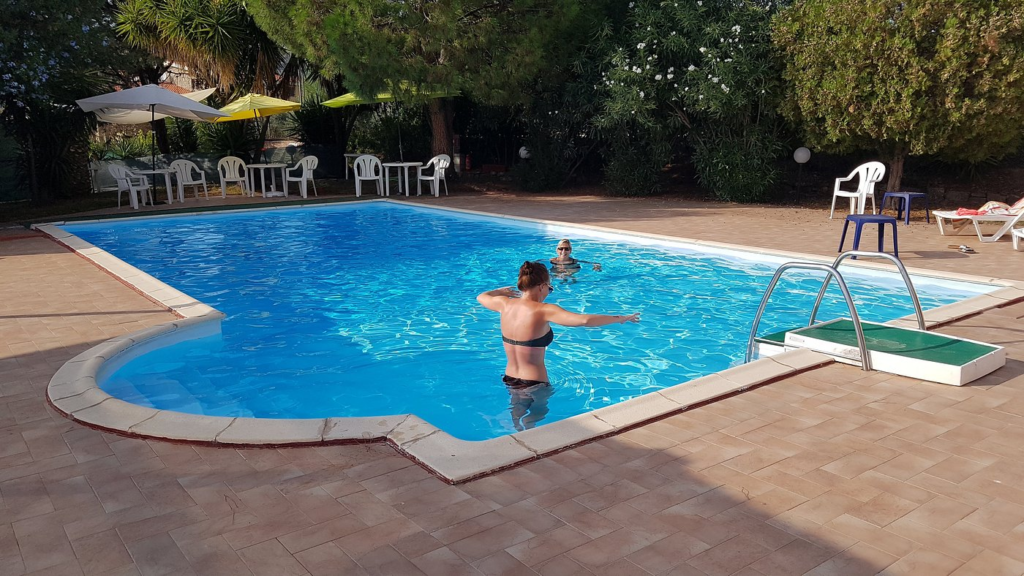

Location: Via Cavour, Barumini
Description: This hotel features traditional Sardinian decor and offers amenities such as an outdoor pool and a garden. The on-site restaurant is highly recommended for its local cuisine, providing an authentic dining experience.
Amenities: Outdoor pool, free Wi-Fi, on-site restaurant
Highlights: Local cuisine, outdoor pool
Hotel Su Nuraxi
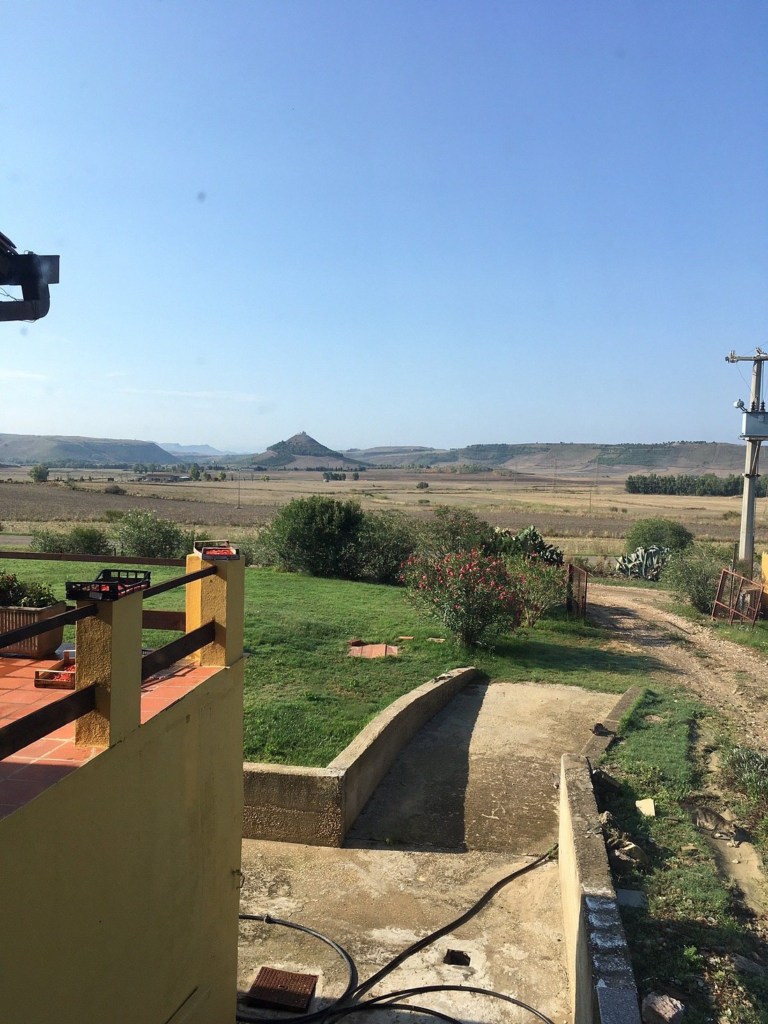

Location: Viale Su Nuraxi, Barumini
Description: Situated close to the UNESCO World Heritage site of Su Nuraxi, Hotel Su Nuraxi offers comfortable accommodations with modern amenities. The hotel features free Wi-Fi, on-site parking, and a restaurant that serves local cuisine. It is an excellent choice for visitors looking to stay near the main attractions.
Amenities: Free parking, pet-friendly, free Wi-Fi
Highlights: Proximity to Su Nuraxi, local cuisine restaurant
Diecizero Affittacamere
Location: Barumini
Description: This unique guesthouse is set in a converted cinema, offering an artistic and stylish atmosphere. Each room is individually decorated, providing a unique experience for guests. It is known for its welcoming hosts and creative environment.
Amenities: Free parking, free Wi-Fi, pet-friendly
Highlights: Artistic decor, unique ambiance
B&B Casa Piras
Location: Barumini
Description: Known for its spacious, clean rooms and beautiful garden views, B&B Casa Piras offers a warm and friendly atmosphere. The hostess is particularly noted for her hospitality and the delicious breakfast featuring homemade products.
Amenities: Free Wi-Fi, garden, homemade breakfast
Highlights: Friendly atmosphere, garden views
Where is Barumini?
Barumini is a comune (municipality) located in the Province of South Sardinia (Cagliari) in the Italian region of Sardinia. It is situated about 50 kilometres (31 mi) north of Cagliari and about 15 kilometres (9 mi) northeast of Sanluri.
Barumini borders the following municipalities: Gergei, Gesturi, Las Plassas, Tuili, Villanovafranca.
The elevated position of the archaeological site of Su Nuraxi di Barumini dominates a vast and fertile plain to the west of the municipal district of Barumini.
Getting to Barumini
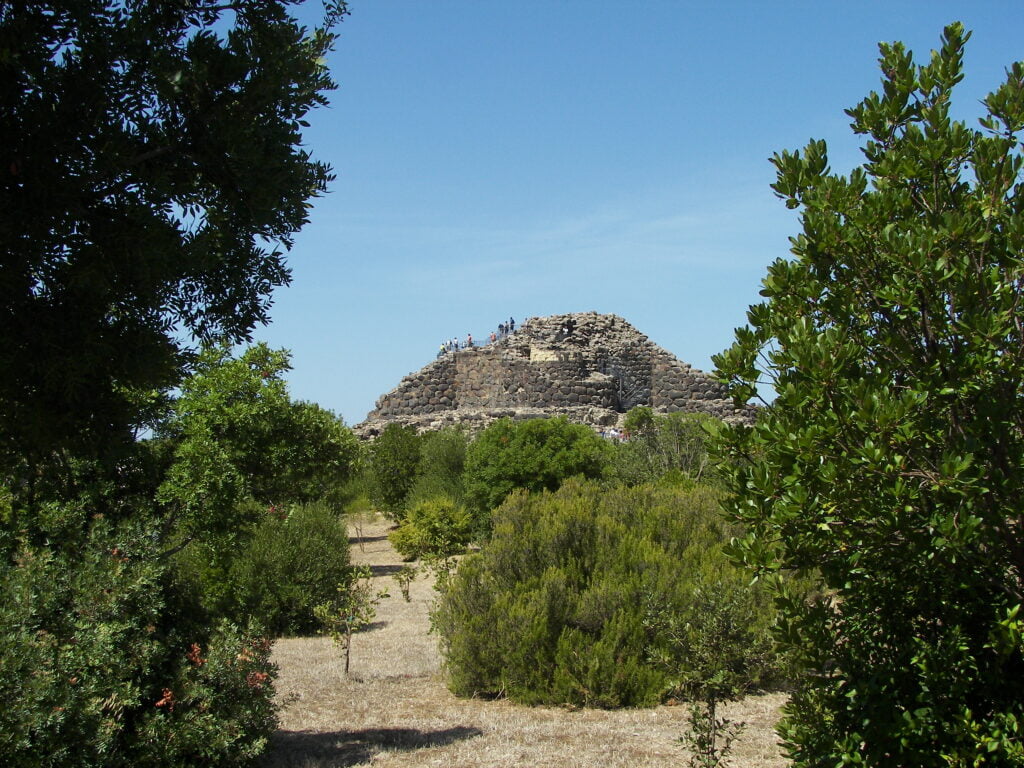
Transportation Options from Major Cities in Sardinia
- From Cagliari: Barumini is approximately 60 kilometers north of Cagliari, the capital of Sardinia. The most convenient way to reach Barumini from Cagliari is by car, which takes about an hour via SS131 and SP197. Public transportation options include buses operated by ARST, which run regularly between Cagliari and Barumini.
- From Alghero: Alghero is located on the northwest coast of Sardinia, about 170 kilometers from Barumini. Driving from Alghero to Barumini takes around two and a half hours via SS131. Alternatively, you can take a combination of trains and buses, though this route may take longer.
- From Olbia: Situated in the northeast of Sardinia, Olbia is about 200 kilometers from Barumini. The drive from Olbia takes approximately two and a half hours via SS131. Public transportation options include trains to Cagliari followed by a bus to Barumini.
Dining Options
Popular Restaurants and Local Dishes to Try
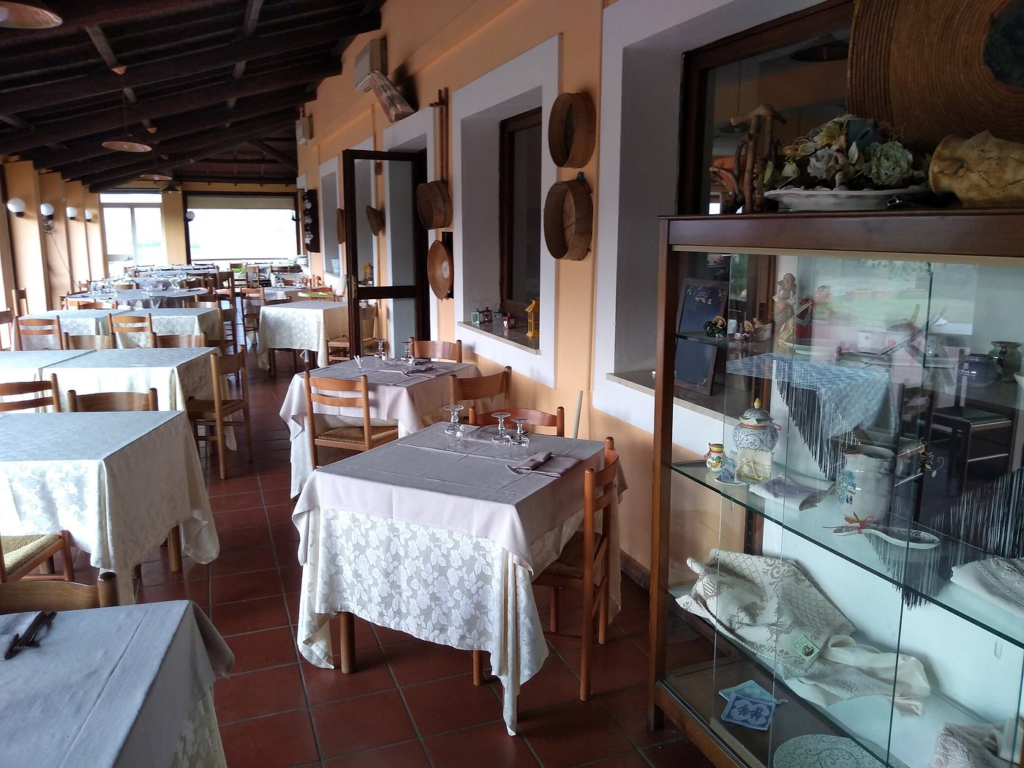

- Ristorante Su Nuraxi: Located near the archaeological site, this restaurant provides a range of Sardinian specialties. Try the fregola (a type of Sardinian pasta) with clams or the malloreddus (Sardinian gnocchi) in tomato sauce.
- Ristorante Sa Lolla: Known for its traditional Sardinian cuisine, Sa Lolla offers dishes like culurgiones (Sardinian stuffed pasta), roasted suckling pig, and a variety of local seafood. The restaurant’s rustic ambiance and local flavors make it a favorite among visitors.
- Ristorante Il Cavallino della Giara: Situated near La Giara di Gesturi, this restaurant offers hearty, traditional meals. Signature dishes include lamb cooked with herbs and myrtle, and various grilled meats.
